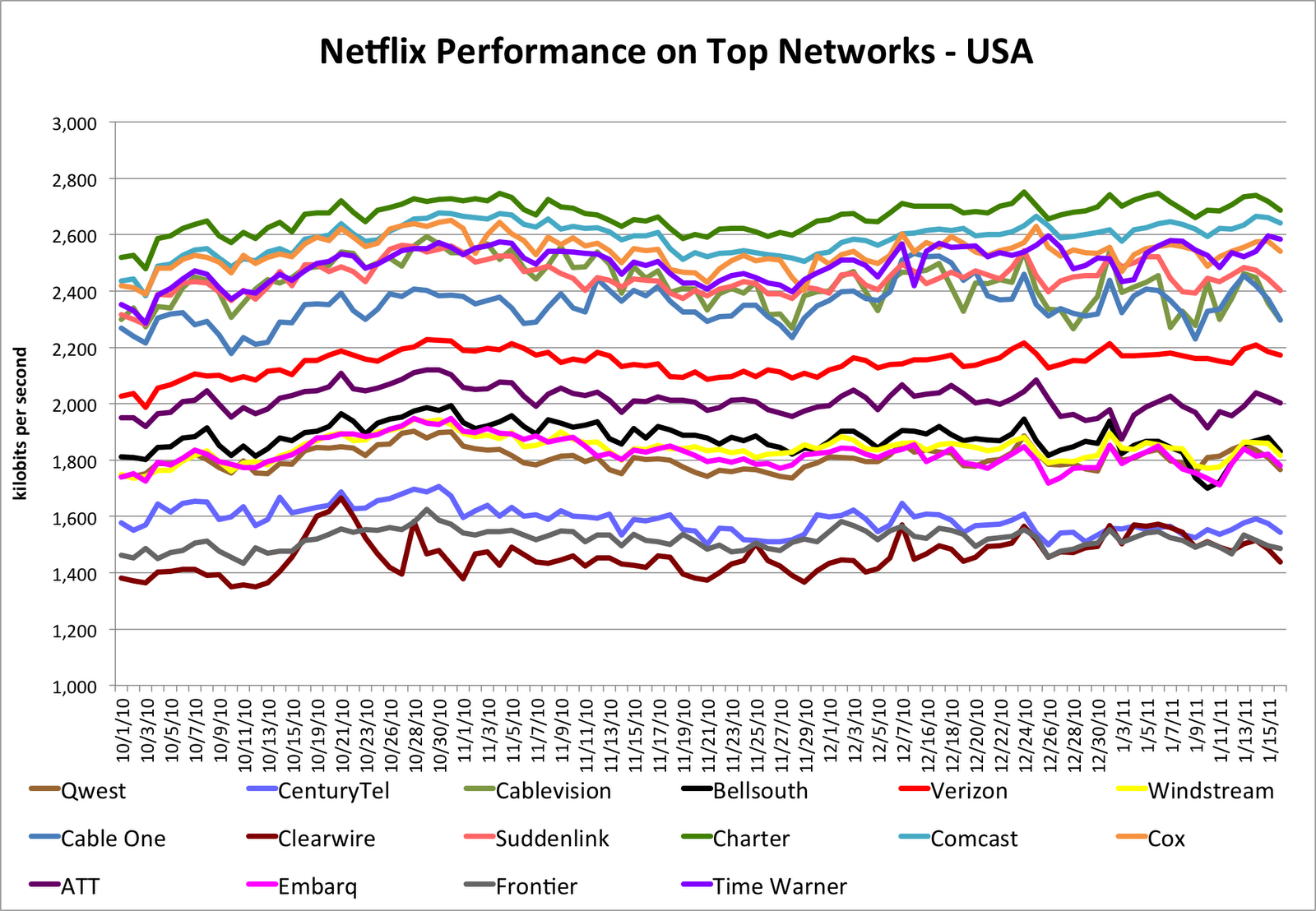Interesting numbers from the Netflix Tech Blog.
Several things jump out at me. First, cable is faster than DSL, and wireless is the slowest. Second, again no surprise, urban is faster than rural. But the big surprise to me is the Verizon number. They have spent a ton on FIOS, and according to Trefis about half of Verizon’s broadband customers are now on FiOS. So according to these numbers, even if we supposed that Verizon’s non-FiOS customers were getting a bandwidth of zero, the average bandwidth available to a FiOS customer appears to be less than 5 megabits per second.
Since FiOS is a very fast last mile, the bottleneck might be in the backhaul, or, more likely, in some bandwidth-throttling device. Whichever way you slice it, it’s hard to cast these numbers in a positive light for Verizon.

Update January 31, 2011: This story in the St. Louis Business Journal says that the Charter, the ISP with the best showing in the Netflix measurements, is increasing its speed further, with no increase in price. This is good news. It is time that ISPs in the US started to compete on speed.
Contemplating the graphs, the lines appear to cluster to some extent in three bands, centered on 1.5 mbps, 2 mbps and 2.5 mbps. If this is evidence of traffic shaping, these are the numbers that ISPs should be using in their promotional materials, rather than the usual “up to” numbers that don’t mention minimums or averages.

Rough confirmation for these speeds is here